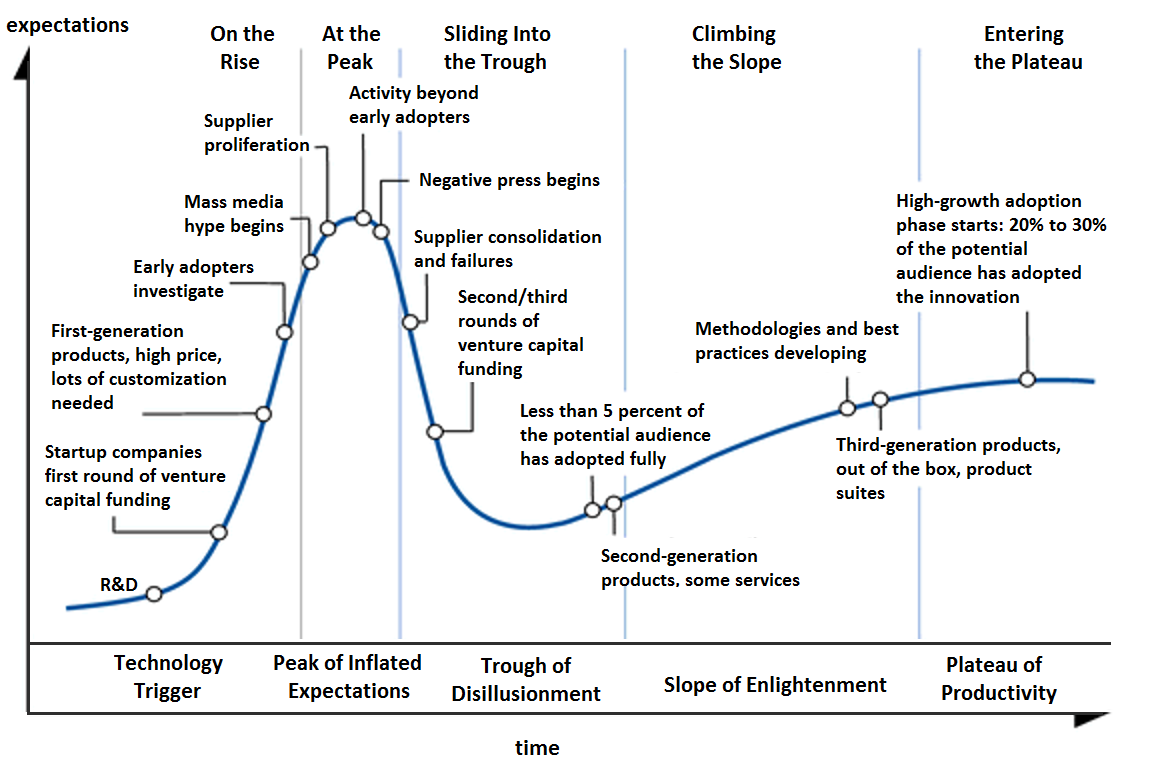|
API Management
API management is the process of creating and publishing web application programming interfaces (APIs), enforcing their usage policies, controlling access, nurturing the subscriber community, collecting and analyzing usage statistics, and reporting on performance. API Management components provide mechanisms and tools to support developer and subscriber communities. Components While solutions vary, components that provide the following functions are typically found in API management products: * Gateway: a server that acts as an API front-end, receives API requests, enforces throttling and security policies, passes requests to the back-end service and then passes the response back to the requester. A gateway often includes a transformation engine to orchestrate and modify the requests and responses on the fly. A gateway can also provide functions such as collecting analytics data and providing caching. The gateway can provide the functionality to support authentication, author ... [...More Info...] [...Related Items...] OR: [Wikipedia] [Google] [Baidu] |
Application Programming Interface
An application programming interface (API) is a way for two or more computer programs to communicate with each other. It is a type of software interface, offering a service to other pieces of software. A document or standard that describes how to build or use such a connection or interface is called an ''API specification''. A computer system that meets this standard is said to ''implement'' or ''expose'' an API. The term API may refer either to the specification or to the implementation. In contrast to a user interface, which connects a computer to a person, an application programming interface connects computers or pieces of software to each other. It is not intended to be used directly by a person (the end user) other than a computer programmer who is incorporating it into the software. An API is often made up of different parts which act as tools or services that are available to the programmer. A program or a programmer that uses one of these parts is said to ''call'' tha ... [...More Info...] [...Related Items...] OR: [Wikipedia] [Google] [Baidu] |
Orchestration (computing)
In system administration, orchestration is the automated configuration, coordination, and management of computer systems and software.Erl, Thomas (2005) Service-Oriented Architecture: Concepts, Technology & Design. ''Prentice Hall'', . A number of tools exist for automation of server configuration and management, including Kubernetes, Ansible, Puppet, Salt, Terraform, and AWS CloudFormation. Usage Orchestration is often discussed in the context of service-oriented architecture, virtualization, provisioning, converged infrastructure and dynamic data center topics. Orchestration in this sense is about aligning the business request with the applications, data, and infrastructure. In the context of cloud computing, the main difference between workflow automation and orchestration is that workflows are processed and completed as processes within a single domain for automation purposes, whereas orchestration includes a workflow and provides a directed action towards larger goals an ... [...More Info...] [...Related Items...] OR: [Wikipedia] [Google] [Baidu] |
Reverse Proxy
In computer networks, a reverse proxy is the application that sits in front of back-end applications and forwards client (e.g. browser) requests to those applications. Reverse proxies help increase scalability, performance, resilience and security. The resources returned to the client appear as if they originated from the web server itself. Large websites and content delivery networks use reverse proxies, together with other techniques, to balance the load between internal servers. Reverse proxies can keep a cache of static content, which further reduces the load on these internal servers and the internal network. It is also common for reverse proxies to add features such as compression or TLS encryption to the communication channel between the client and the reverse proxy. Reverse proxies are typically owned or managed by the web service, and they are accessed by clients from the public Internet. In contrast, a forward proxy is typically managed by a client (or their co ... [...More Info...] [...Related Items...] OR: [Wikipedia] [Google] [Baidu] |
OpenAPI Specification
The OpenAPI Specification, previously known as the Swagger Specification, is a specification for a machine-readable interface definition language for describing, producing, consuming and visualizing RESTful web services. Previously part of the Swagger framework, it became a separate project in 2016, overseen by the OpenAPI Initiative, an open-source collaboration project of the Linux Foundation. Swagger and some other tools can generate code, documentation and test cases from interface files. History Swagger development began in early 2010 by Tony Tam, who was working at online dictionary company Wordnik. In March 2015, SmartBear Software acquired the open-source Swagger API specification from Reverb Technologies, Wordnik's parent company. In November 2015, SmartBear announced that it was creating a new organization called the OpenAPI Initiative under the sponsorship of the Linux Foundation. Other founding member companies included 3scale, Apigee, Capital One, Google, IBM, In ... [...More Info...] [...Related Items...] OR: [Wikipedia] [Google] [Baidu] |
RAML (software)
RESTful API Modeling Language (RAML) is a YAML-based language for describing static APIs (but not REST APIs). It provides all the information necessary to describe APIs on the level 2 of the Richardson Maturity Model. Although designed with RESTful APIs in mind, RAML is not capable of describing APIs that not obey all constraints of REST. It encourages reuse, enables discovery and pattern-sharing and aims for merit-based emergence of best practices. History RAML was first proposed in 2013. The initial RAML specification was authored by Uri Sarid, Emiliano Lesende, Santiago Vacas and Damian Martinez, and garnered support from technology leaders like MuleSoft, AngularJS, Intuit, Box, PayPal, Programmable Web and API Web Science, Kin Lane, SOA Software, and Cisco. Development is managed by the RAML Workgroup. The current workgroup signatories include technology leaders from MuleSoft (Uri Sarid, CTO), AngularJS (Misko Hevery, Project Founder), Intuit (Ivan Lazarov, Chief Enterpris ... [...More Info...] [...Related Items...] OR: [Wikipedia] [Google] [Baidu] |
OAuth2
OAuth (short for "Open Authorization") is an open standard for access delegation, commonly used as a way for internet users to grant websites or applications access to their information on other websites but without giving them the passwords. This mechanism is used by companies such as Amazon, Google, Facebook, Microsoft, and Twitter to permit the users to share information about their accounts with third-party applications or websites. Generally, OAuth provides clients a "secure delegated access" to server resources on behalf of a resource owner. It specifies a process for resource owners to authorize third-party access to their server resources without providing credentials. Designed specifically to work with Hypertext Transfer Protocol (HTTP), OAuth essentially allows access tokens to be issued to third-party clients by an authorization server, with the approval of the resource owner. The third party then uses the access token to access the protected resources hosted by the re ... [...More Info...] [...Related Items...] OR: [Wikipedia] [Google] [Baidu] |
Network Management System
Network monitoring is the use of a system that constantly monitors a computer network for slow or failing components and that notifies the network administrator (via email, SMS or other alarms) in case of outages or other trouble. Network monitoring is part of network management. Details While an intrusion detection system monitors a network threats from the outside, a network monitoring system monitors the network for problems caused by overloaded or crashed servers, network connections or other devices. For example, to determine the status of a web server, monitoring software may periodically send an HTTP request to fetch a page. For email servers, a test message might be sent through SMTP and retrieved by IMAP or POP3. Commonly measured metrics are response time, availability and uptime, although both consistency and reliability metrics are starting to gain popularity. The widespread addition of WAN optimization devices is having an adverse effect on most network monitoring too ... [...More Info...] [...Related Items...] OR: [Wikipedia] [Google] [Baidu] |
Continuous Improvement Process
A continual improvement process, also often called a continuous improvement process (abbreviated as CIP or CI), is an ongoing effort to improve products, services, or processes. These efforts can seek " incremental" improvement over time or "breakthrough" improvement all at once. Delivery (customer valued) processes are constantly evaluated and improved in the light of their efficiency, effectiveness and flexibility. Some see CIPs as a meta-process for most management systems (such as business process management, quality management, project management, and program management). W. Edwards Deming, a pioneer of the field, saw it as part of the 'system' whereby feedback from the process and customer were evaluated against organisational goals. The fact that it can be called a management process does not mean that it needs to be executed by 'management'; but rather merely that it makes decisions about the implementation of the delivery process and the design of the delivery process it ... [...More Info...] [...Related Items...] OR: [Wikipedia] [Google] [Baidu] |
Service-level Agreement
A service-level agreement (SLA) is a commitment between a service provider and a customer. Particular aspects of the service – quality, availability, responsibilities – are agreed between the service provider and the service user. The most common component of an SLA is that the services should be provided to the customer as agreed upon in the contract. As an example, Internet service providers and telcos will commonly include service level agreements within the terms of their contracts with customers to define the level(s) of service being sold in plain language terms. In this case, the SLA will typically have a technical definition of '' mean time between failures'' (MTBF), '' mean time to repair'' or '' mean time to recovery'' (MTTR); identifying which party is responsible for reporting faults or paying fees; responsibility for various data rates; throughput; jitter; or similar measurable details. Overview A service-level agreement is an agreement between two or ... [...More Info...] [...Related Items...] OR: [Wikipedia] [Google] [Baidu] |
Gartner
Gartner, Inc is a technological research and consulting firm based in Stamford, Connecticut that conducts research on technology and shares this research both through private consulting as well as executive programs and conferences. Its clients include large corporations, government agencies, technology companies, and investment firms. In 2018, the company reported that its client base consisted of over 12,000 organizations in over 100 countries. As of 2022, Gartner has over 15,000 employees located in over 100 offices worldwide. It is a member of the S&P 500. History Gideon Gartner founded Gartner, Inc in 1979. Originally private, the company launched publicly as Gartner Group in 1986 before Saatchi & Saatchi acquired it in 1988. In 1990, Gartner Group was acquired by some of its executives, including Gartner himself, with funding from Bain Capital and Dun & Bradstreet. The company went public again in 1993. In 2000, the name was simplified from ''Gartner Group'' to G ... [...More Info...] [...Related Items...] OR: [Wikipedia] [Google] [Baidu] |
Forrester Research
Forrester is a research and advisory company that offers a variety of services including research, consulting, and events. Forrester has nine North America locations: Cambridge, Massachusetts; New York, New York; San Francisco, California; McLean, Virginia; Nashville, Tennessee; Norwalk, Connecticut; Austin, Texas; Dallas, Texas; and Toronto, Canada. It also has four European locations: Amsterdam, Frankfurt, London, and Paris and four locations in the APAC region: New Delhi, Singapore, Beijing, and Sydney. History Forrester was founded in July 1983 by George Forrester Colony, now chairman of the board and chief executive officer, in Cambridge, Massachusetts. The company's first report, "The Professional Automation Report," was published in November 1983. In November 1996, Forrester announced its initial public offering of 2,300,000 shares. In February 2000, the company announced its secondary public offering of 626,459 shares. In 2011, Forrester announced the ... [...More Info...] [...Related Items...] OR: [Wikipedia] [Google] [Baidu] |


